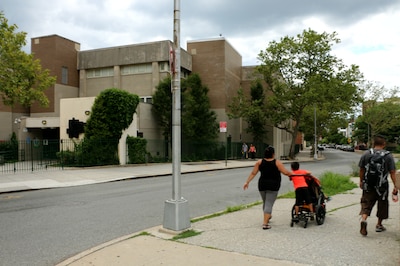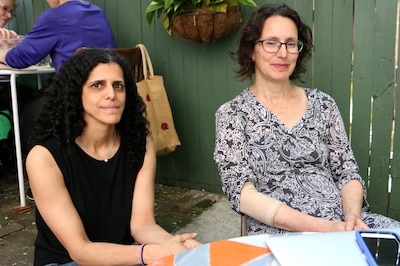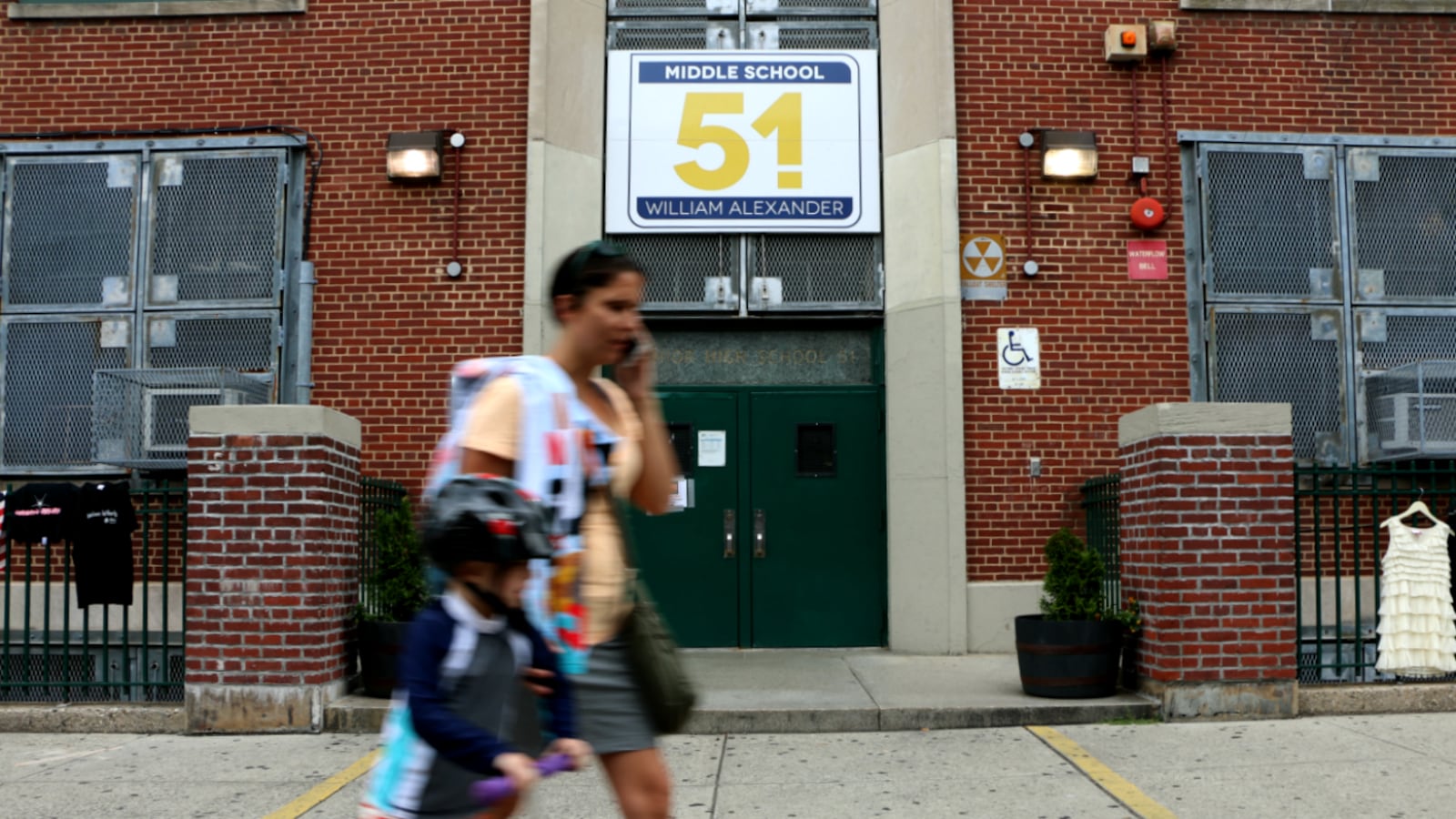In leafy, liberal Park Slope and the Brooklyn neighborhoods nearby, many parents divide the local middle schools into two tiers: the “Big Three” and the rest.
First among the Big Three is M.S. 51 on Park Slope’s bustling Fifth Avenue. One of a dozen middle schools that families can choose from if they live within a four-mile-long stretch of west Brooklyn known as District 15, M.S. 51 is where Mayor Bill de Blasio sent his children and where students find a well-traveled path to the city’s most elite public high schools.
Next on the Big Three list are M.S. 447, a Boerum Hill school that specializes in math and science, and New Voices School of Academic and Creative Arts, a performing arts school in Sunset Park.
In theory, any student who lives in District 15’s borders — which include not only the well-heeled Park Slope and Carroll Gardens neighborhoods, but also working-class Red Hook and Sunset Park — can attend the Big Three. In practice, the schools are dominated by a subset of families: At the Big Three, over 50 percent of students are white, and less than 30 percent come from low-income families. At the other nine middle schools, just 10 percent of students are white, and more than 80 percent are poor.
That divide highlights a harsh truth about the sources of school segregation in New York City.
Many people, including Mayor de Blasio, point to segregated neighborhoods as the cause of separate schools. In fact, many of the city’s school zones and districts encompass a mix of families. And by opening up every school to any family in a district, “school choice” systems like the one in District 15 offer a golden opportunity to override divided neighborhoods and make schools integrated.
Instead, district parents, schools, and officials have made choices that reinforce segregation.
Parents on each end of the district tend to choose separate middle schools, with affluent parents on the north end often choosing to exploit their networks and their savvy to cram into the highest-performing ones. Those schools choose to expend considerable energy handpicking students: M.S. 51 pores over the academic and behavioral records of its 10- and 11-year-old applicants, M.S. 447 interviews students and gives them a math or science test, and New Voices requires an audition. And finally, officials choose to allow a system where high-performing students attend one set of schools, and high-needs students attend another.
Recently, as school segregation has come under fire in New York and across the nation, one of the Big Three middle schools crafted a plan to boost its own diversity. But an official plan to collapse the district’s two tiers into one is nowhere in sight.
Getting into the ‘Big Three’
In the whiter, wealthier northern half of District 15, competition is fierce for a seat at a Big Three school. Last year, nearly five families vied for every open seat at M.S. 51.
“You have to battle for your so-called choice,” said Antonia Martinelli, a Gowanus parent and blogger who put M.S. 51 and 447 at the top of her son’s application. Otherwise, “there’s a fear that your child won’t get into a good enough high school.”
Some parents pay a private consultant $400 for a two-hour consultation about the district’s admission process. Others rely on their social circles, sending out group emails and texts about changes to the entry requirements at the sought-after middle schools and the dates when they offer tours.
Because parents believe that attending one of the school tours will increase their odds of admission, many wait at their computers for the exact moment when online registration begins. The spots are usually snatched up within hours. (One parent compared the process to scoring Taylor Swift tickets; another said Radiohead.)
Then they must take off many hours of work to attend the tours, which typically happen during the school day. Some said they also called and emailed the schools’ principals or staffers to introduce themselves, hoping that might give their children a boost.
“It’s almost a full-time job,” said Rhonda Keyser, whose child attends M.S. 51.
Who attends District 15’s “Big Three” middle schools?
Note: The "Other District 15 middle schools" are: M.S. 442, School for International Studies, Brooklyn School for Collaborative Studies, Park Slope Collegiate, M.S. 88, Brooklyn School for Global Studies (phasing out), Sunset Park Preparatory, I.S. 136 and M.S. 839 (which did not have low income or test score data available). Data source: NYC Department of Education, Credit: Sarah Glen/ChalkbeatUltimately, the competition is within a narrow group of parents.
Eight of the district’s 25 elementary schools send half or more of their students to one of the Big Three, according to city data. Those elementary schools are on average 64 percent white and just 17 percent low-income. (Districtwide, 31 percent of students are white and 65 percent are considered poor.)
Monica Kipiniak’s son attends the School for International Studies, one of several district and charter schools where families who did not make it into the Big Three are starting to venture. She said the fight for Big Three seats favors wealthier parents with the time and ability to navigate the process and to ensure their students are strong academically.
“There’s no question,” she said, “that for many reasons, kids who come from more affluent families end up going to the more desirable schools.”
Who doesn’t get in
Just a few subway stops away, the southern end of District 15 can seem worlds apart from that frenzy.
In Sunset Park, an immigrant-filled neighborhood home to many Hispanic families and its own Chinatown, many parents are daunted by the application process and opt to apply only to local middle schools they already know, said Julie Stein Brockway, co-director of the Center for Family Life in Sunset Park. In addition, many are reluctant to let their young children travel to schools outside the neighborhood.
Still, she said many would consider applying to northern-end schools if they were encouraged to. But even though her social-service agency works with hundreds of local families, she said only charter schools have asked her for help recruiting Sunset Park students — never one of the Big Three.
“I’ve been at this agency for 34 years and nobody’s reached out to me,” she said. “It’s not like we don’t have access to families — we could certainly be helpful.”

Even when schools in the northern end have been invited to meet with Sunset Park families, some have declined. Several people at P.S. 172, a high-performing Sunset Park school, said many district middle schools failed to send representatives to an information session for parents that the school hosted last fall.
“There was a lot of disappointment,” said Alexa Aviles, P.S. 172’s parent-teacher association co-president. “It just begs the question: What’s the responsibility of middle schools to do outreach across the district?”
Meanwhile, guidance counselors and parent liaisons at some northern-end elementary schools share limited information about middle schools beyond the Big Three and a few other options that are considered acceptable, several people said.
“Some of the guidance counselors are stuck in their ways — they promote the same three schools,” said Jessica Forman, a guidance counselor at M.S. 88, which sits just 15 blocks from M.S. 51 but has one-sixth as many white students and nearly four times as many who are low-income. “It’s a frustrating experience.”
And then there are the “screens” — the criteria that selective schools use to rank applicants.
The Big Three release the factors they consider — class grades, test scores, attendance, behavior marks, interviews, or auditions, depending on the school — but not the cutoff levels for any of those categories. Whether M.S. 51, for instance, only seeks “A” students with sterling attendance records who aced the state exams, or a greater mix, is a secret. (The principals of M.S. 51 and New Voices did not respond to interview requests. M.S. 447 Principal Arin Rusch simply said: “It’s a ranking system.”)
Advocates say an even greater problem than the lack of transparency is how the system allows a handful of schools to cream the highest-performing students — which then floods the remaining schools with the neediest ones.
The data show that last year’s average incoming student at the Big Three had performed at a level 3.4 out of 4 on the state math exams when they were in fourth grade. By contrast, the average student at the district’s other schools entered at a level 2.3, considered below passing.
“We don’t think there’s any legitimate justification for sorting kids like that,” said Reyhan Mehran, a member of a group called District 15 Parents for Middle School Equity. “Clustering children who are high-needs and low-needs into different schools doesn’t help anybody.”
Calls for change
In October, District 15 Parents for Middle School Equity distributed paper and online petitions calling for an admissions system “that does not promote sorting and segregating our District’s 10-year olds.” Among the roughly 500 people who signed on was a mother named Magaly Morales.
Her son is “a kind, quiet and shy boy,” she wrote, who will likely be shut out of the district’s competitive middle schools “with all the screenings and limited seats.”
“It is so unfair and sad,” she wrote. Still, “I am glad I am not alone in this matter and do hope one day there will be change.”

The handful of parents at the core of the equity group have surveyed their peers about the current admissions system and given presentations on the segregation they say it leads to. Without endorsing a particular solution, they have said one option is “controlled choice” — a district-wide enrollment system that uses demographic information about families and their school preferences to assign students to schools. The system is typically used to spread poor and affluent students evenly among schools, and avoid the type of tiered system like the one in District 15.
But even people who are sympathetic to the group’s message question whether controlled choice would stand a chance in the district.
Affluent parents buy homes in the high-priced neighborhoods around coveted elementary schools, like P.S. 321, expecting that this will give their child an edge in getting into a Big Three middle school and then a top high school. It’s hard to imagine such parents backing a plan that would restrict their access to the Big Three.
“Are they willing to give up their seat in 51 for a child in the southern part of the district?” said Naila Rosario, president of the district’s community education council and a parent at P.S. 172. “That has yet to be seen.”
If parents strongly oppose a plan like controlled choice, that could doom it. Mayor Bill de Blasio has said the city must respect parents’ choice to live near desired schools, and Chancellor Carmen Fariña has said the city should not mandate integration — it must happen “organically.”
That has left advocates like the parents in District 15’s equity group trying to rally enough support for an alternative system to convince the city to act.
“I don’t know what kind of ‘organic’ process they’re looking for,” said Miriam Nunberg, a district parent and equity group member, “short of some sort of professional, full-time advocacy organization.”
City Councilman Brad Lander, who represents the district and whose own children attended M.S. 51, said he has grown wary of watching average and top-performing students end up in separate middle schools.
“Achievement sorting deeply accretes race and class privilege,” he said. “I don’t think we gain enough from this high-stakes sorting for what it costs.”
He said he wants the district to work towards adopting a controlled-choice system for its middle schools, which it can do by continuing to build the reputation of schools beyond the Big Three and by requiring every school to serve at least 30 percent low-income students.
A plan to move immediately to an integrated system “would have no chance and it would fail,” Lander said. “A better approach is something that recognizes the moral urgency of equity, but takes steps to make things better.”
The district superintendent, Anita Skop, recently announced a new policy that will keep middle schools from seeing how parents ranked them on their applications. That should make the process less stressful for parents, but it was not designed to undo the district’s deep segregation.
More promising on that front is a plan at M.S. 447 — one of the Big Three — to adopt a new admissions policy designed to help it enroll more poor students and students with a broader range of academic abilities. “We want to make sure that it feels like kids have access to our school across income and academic lines,” said Principal Rusch.
Meanwhile, a new middle school, M.S. 839, has adopted an admissions lottery that does away with ability screening, while Park Slope Collegiate only looks at the elementary school applicants attended — not their grades or test scores — in an effort to enroll a representative mix of students.
But even proponents of those school-level changes say they don’t go far enough to overcome the district’s deep divisions. That, they say, would take a system-wide solution.
“There is nothing ‘organic’ about school segregation,” said Park Slope Collegiate Principal Jill Bloomberg. “If we’re serious about undoing it, then we have to make it a policy.”

